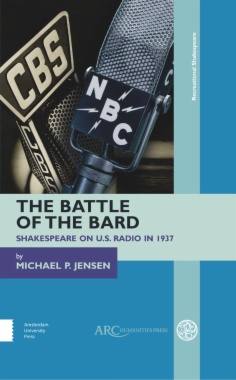Difficult as it is to imagine today, in 1937 America’s two leading media companies fought over the right to perform Shakespeare for an American radio audience in an attempt to bring prestige to their networks. The resulting fourteen broadcasts are among the more remarkable recreations of Shakespeare of their time. This lively and engaging book shows the cultural dominance of radio in the 1930s, and tells the story of why the networks each wanted to lord Shakespeare’s prestige over the other, how they put their series together, the critical reception, and the cultural impact and legacies of the broadcasts.
- Cover
- Half-title
- Title page
- Copyright information
- Table of contents
- Dedication
- General Editors’ Preface
- Preface
- A Note on the Text?
- Introduction: What Was Radio?
- The Character of Network.Radio
- Chapter 1. Preliminary Bouts: Shakespeare on American Radio before the Battle
- Shakespeare on Local Stations
- The Networks Begin
- Shakespeare on Local Radio after the Networks Began
- Chapter 2. In This Corner: Streamlined Shakespeare
- Press-Agentry
- Streamlined Shakespeare
- Broadcasts and Reviews
- Evaluating Streamlined Shakespeare
- Post Show Thoughts
- Chapter 3. And in That Corner: The Columbia Shakespeare Cycle
- Broadcasts and Reviews
- Evaluating the Columbia Shakespeare Cycle
- Post Show Thoughts
- Chapter 4. And the Winner Is? Aftermath, Afterlives, After Shows, and Alternative Shows
- Aftermath
- Alternate Shakespeare during the Battle and Other Literary Programs
- Afterlives
- The Major Players after the Battle of the.Bard
- Afterword: A Brief Murky Consideration of Recreational Shakespeare as a Concept in Light of the Battle, with Some Personal Reflections
- The Battle of the Bard Website
- Selected Index

